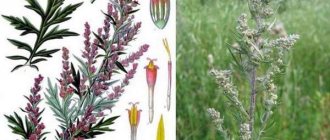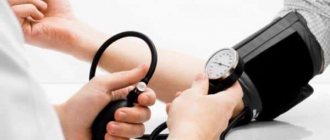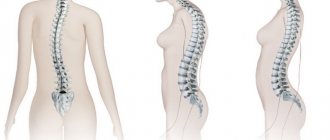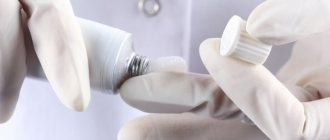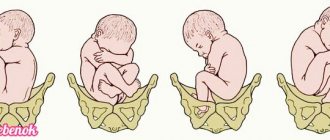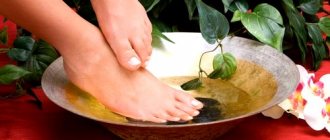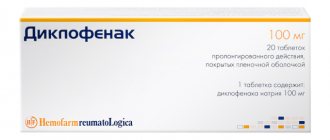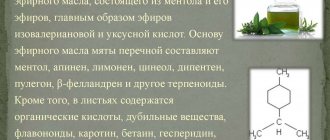Simple exercises
httpv://www.youtube.com/watch?v=embed/Dkm2MAtt6Cg
Patient physical activity is an important factor in the treatment of rheumatoid arthritis. Even the simplest set of exercises has a good effect on joint health and strengthening muscles. The best time to do exercises is morning; you can do them during the day and evening. Never overeat before training. It is optimal that 1.5 hours pass after eating.
A set of exercises while lying down
They are performed from a horizontal position. Choose a perfectly flat surface, preferably quite hard. But if something happens, you can also work out on the bed:
- Let's get saturated with oxygen. Stretch out, arms at your sides, legs straight, shoulder width apart. Breathe deeply and measuredly, with the inhalation shorter than the exhalation. Repeat 4-6 times.
- Maintain your position. Clench and unclench your fingers in rhythm with your breathing.
- Proceed to flexion and extension of the ankle and wrist joints. Synchronize your workout with your breathing.
- Head turns. Number of repetitions – 6 times in each direction.
- As you inhale, slowly raise both arms behind your head, while arching your back slightly. As you exhale, lower them to the starting position.
- Bend your knees. Tilt them to one side, then the other, without lifting your heel and feet.
- Turn over on your side and swing your leg up/down. Exercise smoothly, without sudden movements. Turn to the other side and repeat.
Nothing simpler than these exercises has yet been invented. If the pain syndrome is mild, they are quite accessible to perform even for a person with minimal physical training.
A set of exercises while sitting
Gymnastics for rheumatoid arthritis can be performed not only lying down, but also sitting. The following 5 exercises are just such:
- Walking in place. Walk, bending your knee joints and raising them as high as possible. Don't make sudden movements. Walk until you feel slightly tired.
- Place your hands on your knees and clench your fingers into a fist for 3-4 seconds, then relax your muscles. Repeat 4-6 times.
- Place your feet shoulder-width apart and place your hands in front of your chest. As you inhale, spread your arms to the sides, and as you exhale, return to the original position. Repeat 4-6 times.
- Fix your fingers on the shoulder joints. Inhale, raising your elbows as high as possible, without lifting your legs off the floor. As you exhale, lower your elbows down. Number of repetitions – 5.
- Lower your hands down. Slowly bend and straighten your elbows 4 to 6 times on each arm.
After a fully completed complex, only slight fatigue should be felt.
Shoulder program
Gymnastics for the shoulder have been developed separately. Exercise therapy helps restore joint mobility, eliminate unpleasant symptoms, and also prevents contractures. Movements can be either isometric or dynamic. The first option is used if a person has a pronounced limitation of joint mobility. Such exercises will help keep the muscles in tone in this place. But in case of exacerbation, such training is prohibited. A striking example of training is this exercise: you need to lie on your back on a flat surface and press your hands on it, having first extended them.
Dynamic training involves specific movements. For example, the following set of exercises is suitable:
- First, raise and lower your shoulders. Try to reach them as high as possible.
- Rotate the shoulder joint back and forth in a circle.
- Grab your elbows with your palms and try to lower and raise both elbows at the same time, without lifting your hands.
- Place your hands on your shoulders and move your elbows forward one by one.
- Lie on your back, stretch your arms up in front of you. Then bend them with your chest. Then straighten it and place it near your hips.
- Stand up and keep your hands on your belt, raise them and put them behind your head. Then repeat everything again.
All tasks must be completed 10 times. It is recommended to end this set of exercises like this: hug yourself by the shoulders. After this, all that remains is to relax.
The importance of gymnastics in the treatment of rheumatoid joint inflammation
Regular training is extremely important in complex anti-arthritic therapy. They maintain and improve joint and muscle tone and have a strengthening effect on damaged tissues. Dosed loads give muscles and joints additional flexibility and improve the overall picture of the pathological process. Thanks to the exercises:
- It is possible to get rid of debilitating pain syndrome;
- Motor amplitude increases;
- The functionality of joint tissues increases;
- Swelling and inflammatory processes decrease;
- The integrity of the articular fractions is restored;
- Self-service options are returning;
- The quality of life improves.
Causes
More often, polyarthritis of the fingers is an age-related disease.
In older people, due to poor blood circulation and metabolism, the joints do not receive enough nutrients. Cartilage and bone tissue becomes thinner, wears out and breaks down, resulting in the development of arthrosis. In women, hand arthritis often appears during menopause due to hormonal changes in the body.
Other causes of the disease:
- previous injuries (fractures, cracks, bruises, dislocations, sprains);
- constant stress on the hand and fingers;
- metabolic disorders and diseases caused by them, for example, gout or diabetes;
- connective tissue diseases, such as rheumatism or rheumatoid arthritis;
- hypothermia of the extremities;
- psoriasis, lupus erythematosus;
- septic infections, tuberculosis, syphilis and others;
- hereditary predisposition;
- allergic reaction;
- regular stress.
Polyarthritis of the hands is considered an occupational disease. It affects people who do manual work, which involves performing many identical movements. This applies to seamstresses, knitters, tennis players, violinists and others. Their hands are constantly in tension.
Aerobic exercise
Gymnastics for joints for arthritis is accompanied by exercises with your own weight. For example, cycling or race walking. These actions help strengthen the ligamentous apparatus, improve balance, and maintain normal body weight. In addition, aerobics will reduce tension in the body and calm down in stressful situations, improving overall well-being. It can be done several times a week or every other day.
Exercises in water have an excellent effect. Thanks to the shock absorption of water, the load on the ligaments is reduced. Warm water also slightly increases body temperature, which leads to dilation of blood vessels and improved blood flow in the sore joint. It is useful for a person with arthritis to walk. This is one of the easiest and safest options for strengthening the ligaments and muscles of the affected joint. However, it should be remembered that excessive loads can cause harm. Therefore, there are some restrictions in such endeavors.
It's important not to overdo it. Even taking into account the fact that physical therapy has benefits for arthritis, there is always the possibility of going too far.
Exercises performed with high intensity can increase the extent of the inflammatory process in the joint. If pain continues even several hours after training, this means that the load was too great for the patient.
Joint gymnastics by Dr. Bubnovsky
These classes include a set of exercises for static and dynamic muscle contraction. At the same time, all component structures are strengthened, leg muscles are restored and strengthened.
Professor Bubnovsky independently developed a therapeutic complex of classes for musculoskeletal pathologies. This method involves avoiding medications and fixatives. According to the doctor, this task should be solved by one’s own muscles, the resource of which is not fully used.
Important. During one treatment session, the load is applied to the entire musculoskeletal system. Exercises using the Bubnovsky method should be performed under the supervision of an experienced specialist. However, an important role belongs to the patient himself, who does the gymnastics.
- Starting position – lying on your back, on a hard surface, arms along your body. The legs are spread apart by about half a meter, while the socks need to be pulled towards you so that the tension in the back muscles of the lower leg can be felt;
- Without stopping the tension, make circular movements with your toes in one direction and the other;
- Then, without releasing the tension, make similar movements with the entire foot.
Perform each exercise 10-20 times, while making sure that your heels do not leave the floor. You need to complete the lesson by bending your fingers as much as possible towards the sole, as if your fingers are clenched into a fist. You need to hold the position for a few seconds, then relax your fingers and fan them out as wide as possible. Alternate squeezing and spreading your fingers to the sides several times.
During classes, the psychological mood is very important; light music or aromatherapy helps to achieve a positive mood. Be sure to monitor your breathing to enrich the body with oxygen and determine the intensity of the load based on your sensations.
Cyclic repetition of exercises helps to achieve lasting results with regular exercise for several months.
Exercises for Rheumatoid Arthritis
Gymnastics for rheumatoid arthritis helps the body partially restore joint function. Exercises train and develop joints, relieve swelling and pain.
Principles of physical therapy
- Exercise routines for rheumatoid arthritis should not include strength training. Only extension and rotational exercises are allowed.
- The intensity of the load in exercise therapy for rheumatoid arthritis should correspond to the age and condition of the patient.
- Complexes of exercise therapy for rheumatoid arthritis should be carried out regularly and systematically.
- Joint gymnastics exercises cannot be performed during an exacerbation of the disease. Exercise therapy, yoga and other workouts are recommended during remission.
Contraindications
Gymnastics for joints with rheumatoid arthritis should never be carried out in the following pathological conditions and diseases:
- visceral pathologies;
- Stage 3 of disease activity;
- damage to bone joints due to arthritis;
- heart failure grades 2 and 3;
- acute infectious diseases;
- fever;
- exacerbation of a chronic disease;
- respiratory failure, etc.
Types of exercises
Rheumatoid arthritis can destroy different joints. Below are the main joint exercises for a particular group:
- exercises for the ankle joint;
- gymnastics for damage to the joints of the shoulder girdle;
- exercises for finger joints;
- exercises for legs.
Exercises in water, static exercises, yoga, etc. also effectively help fight the disease.
Ankle exercises
- Lifting onto your toes at a support.
- Rolling a ball or roller with your feet on the floor.
- Rolling from heel to toe and back.
- Performing circular movements with your feet.
- Flexion and extension of fingers in a sitting position.
Gymnastics for rheumatoid arthritis of the arms and shoulder joint
- Circular movements of the shoulders forward and backward.
- Raise and lower your shoulders alternately.
- Clasp your elbows with your palms and lift them, then lower them.
- Bring your elbows forward, holding them with your palms.
- Hug yourself, etc.
Exercise therapy for rheumatoid arthritis of the hands
- Make circular movements with each finger.
- Clench your hands into fists and rotate your hands.
- Turn your hands over with your palms up and down.
- Rub your palms together.
- Run your fingers along the stick.
- Squeeze and unclench a ball held in the palm of your hand, etc.
Leg exercises
- Circular rotations with a straight leg.
- "Bike".
- Breeding legs bent at the knees, lying on your back.
- From a lying position, bend your legs without lifting your foot off the floor, etc.
Swimming pool for rheumatoid arthritis
Almost all patients can exercise in water. Underwater exercises for rheumatoid arthritis allow you to gradually restore motor activity. The most effective exercises are:
- Squats with a straight back and legs wide apart.
- Circular movements with legs, swings.
- Circular movements with arms and hands.
- Walking underwater, etc.
Yoga and rheumatoid arthritis
An alternative to traditional gymnastics for rheumatoid arthritis is yoga. This ancient method of healing helps restore damaged ligaments, restore motor activity to joints, lose excess weight, etc. The most effective asanas (postures):
- vrksasana;
- santulanasana;
- setu bandhasana;
- virasana;
- siddhasana, etc.
Yoga for arthritis is very beneficial. Studies have shown that after 6–8 weeks of regular training, patients feel much better, pain goes away, and mobility partially returns to the joints.
Rheumatoid arthritis can be treated in different ways. The main thing is to do the exercises correctly and regularly, follow a diet and lead a healthy lifestyle.
Functional motor test
Before the start of the rehabilitation period, the doctor assesses the degree of limitation of physical activity. For this, various tests are used, one of them is a functional motor study.
During the test, the doctor asks the patient to perform various actions, and based on the results, he objectively assesses the degree of the pathological disorder:
- There is no restriction in movement;
- Professional ability to work is maintained;
- Motor activity is lost;
- There is no possibility of self-service.
Therapeutic exercise for rheumatoid arthritis allows you to restore the functionality of damaged joints and improve the patient’s well-being. Exercise therapy should become a habit that will help you maintain good health and prolong the period of remission.
Gymnastics and exercise therapy for rheumatoid arthritis
The importance of doing exercises when you have this diagnosis is due to the fact that it is associated with damage to the joint tissue. If left untreated, the patient may become completely immobile.
In order to prevent this from happening, it is necessary to strengthen the body as a whole: the skeletal and muscular systems, blood vessels, internal organs, etc. It is correct and regular physical activity that increases overall tone and strengthens the immune system, helping the body fight inflammation.
It is important to note that, like medications, the exercise therapy complex can only be prescribed by a doctor. Any amateur activity in this case is dangerous and sometimes leads to irreversible consequences.
Why do you need gymnastics?
Arthritis is an inflammatory disease affecting the joints. Externally, it can be recognized by such features as:
- Swelling of the skin around the affected area;
- Redness;
- Severe pain;
- Stiffness.
Moreover, it is important to understand that this pathology occurs not only in the elderly, but also in the young - such a disease has no age. As a result of this rejuvenation of the disease, many men have appeared who complain of knee pain. Treatment of arthritis should be comprehensive, but gymnastics plays a significant role in this complex.
Exercises for knees with arthritis are of particular importance. After all, the knee joint is subjected to heavy loads every day - all movement, jogging, squats, etc. - all this is his merit. If some kind of failure occurs and inflammation begins, arthritis develops. And this is the destruction of cartilage tissue and the growth of the bone surface. To prevent such a problem, it is worth doing special exercises. Gymnastics will help keep muscles and ligaments strong and elastic, and also prevent joint deformation.
As experts note, exercise therapy for knee diseases is indicated at different stages of the pathology. After all, light and well-chosen physical activity allows you to restore the functioning of muscles, ligaments and even cartilage. And this costs a lot, because even a slight knee injury can disable you, and later will cause pain and discomfort. Therefore, it is worth eliminating this option in advance.
Exercise therapy stops the development of arthritis, because movement is the enemy of any bone disease.
Ideally, exercise therapy for knee arthritis should be carried out under the supervision of a specialist. But if it’s not there, then you can study on your own.
You should be careful in a situation where the joint is already damaged - you cannot use excessive physical activity in this case. After all, there is a risk of damaging the joint even more.
Therapeutic exercise for arthritis of the knee joint provides the following positive aspects:
- Restores joint function;
- Relieves pain;
- Increases joint mobility;
- Relieves tension from muscles;
- Allows tissues to be saturated with useful elements;
- Improves the quality of life of a person with arthritis.
Doing exercises
The steps of the procedures must be followed. At the first stage, the patient learns to monitor his breathing and masters the technique of this process. Breathing exercises are the basis of any type of exercise; without observing this basis, the positive effect of the procedures will be minimal. You should devote 10 minutes daily to mastering relaxation and breathing techniques.
The main part of the complex is the base stage.
These exercises are performed for 2 weeks if the classes are conducted in a stationary setting. The duration of the lesson should not exceed 30 minutes. Before the patient is discharged, the instructor teaches the patient special exercises that he will need to do independently at home.
Exercising for rheumatoid arthritis must be regular.
It is important to monitor the gradual increase in load; this should not be done abruptly at the initial stages of the procedures. To increase the pace and load there must be prerequisites, which directly relate to improving the patient’s well-being and his recovery dynamics
If you experience pain during the procedures, you should stop exercising.
Some people cannot move, but this does not mean that exercise therapy cannot be performed. To achieve maximum effect from the procedures, you should use an orthopedic mattress. A good option is a stand or headboard with a mobility function. This allows treatment to be carried out with a change in position. The patient independently or with the help of a specialist changes position in bed.
Basic methods and stages of classes
The methodology for conducting exercise therapy is conventionally divided into 3 subtypes:
- Personal training. This type of training is suitable for people undergoing rehabilitation after surgery or for those patients whose disease is at an advanced stage.
- Group training. Based on the severity of the disease, the doctor selects people with the same stage of the disease and conducts group training for them.
- Consultations. The doctor, having found out all the nuances of the patient’s body, selects a set of therapeutic exercises for arthritis and explains to the patient the rules for performing it at home.
When training, you need to remember that the load should increase gradually. You can’t immediately load the body by doing something through pain, abruptly. Everything should be done in stages. In a hospital, for example, the following rules apply:
- Physical therapy begins with breathing exercises, which do not take more than 15 minutes a day and last 2–3 days;
- then the patient is introduced to the main group of exercises, adding a small number of repetitions of each position every day;
- Based on the results of rehabilitation, the doctor advises the patient about the exercises that he will need to perform at home.
As mentioned above, exercise therapy has virtually no contraindications, and even during the acute phase of the disease or the last stage, when the disease is so advanced that the patient is actually immobilized, he is shown a separate type of exercise therapy called positional treatment. Its meaning is to change the position of the patient’s body every hour. In this case, weights, bolsters, and multi-level mattresses are used.
Contraindications for exercise therapy
Physical therapy cannot be performed in the following cases:
- exacerbation of rheumatoid arthritis with pronounced pain symptoms;
- exacerbation of diseases of the heart, kidneys, lungs, blood vessels;
- an infectious disease has been diagnosed;
- with respiratory failure;
- for severe diseases of the cardiovascular system.
At the Yusupov Hospital, a qualified instructor will help you undergo rehabilitation for rheumatoid arthritis. A rehabilitation specialist will select individual exercises based on the severity of the disease and the patient’s condition. Drug treatment should be combined with exercise therapy - this will speed up recovery and prolong the period of remission. Exercises should be performed regularly throughout your life. You can make an appointment with a doctor by calling the Yusupov Hospital.
Rheumatoid arthritis is a disease characterized by deformation and limited mobility/immobility of joints. Exercise therapy, massage, and physiotherapy can stop the development of the disease. Therapeutic exercise strengthens ligaments and muscles, and restores range of motion.
Who needs therapeutic exercises?
Gymnastics is prescribed to patients suffering from arthritis of the legs, including the third and fourth stages of the disease. If movement is limited, the patient will perform breathing exercises, exercises in a lying position, sitting. Gymnastics is contraindicated:
- Gymnastics is not performed during exacerbation of the disease. A person is physically unable to perform exercises due to severe pain.
- Movements are contraindicated in diseases of the kidneys, lungs, blood vessels, and heart.
- Acquired, congenital pathologies.
The doctor takes these points into account, since the patient will be harmed.
Yoga for arthritis of the joints
Proper breathing when performing exercise therapy is the key to the effectiveness of therapy. When performing yoga exercises, all muscle groups are covered, which has a positive effect on the spine. Proper exercise will help get rid of fatigue and pain in the affected joints.
During exercise, proper breathing has a positive effect on filling the blood with oxygen and, in turn, the internal organs. Therapy helps strengthen the immune system.
With the help of yoga you can get rid of headaches, arthritis, arthrosis, obesity. Coordination improves, blood pressure normalizes, and the cardiovascular system is strengthened.
Yoga classes help remove extra pounds, which is especially important when there is excessive stress on the limbs. Exercising will help reduce the size of your stomach, which will help you lose weight.
The positive effect of yoga on the nervous system has been proven. In its own way, this is good meditation. Spiritual balance is restored. A feeling of peace comes.
The main thing when doing yoga is to properly set yourself up psychologically. If you have arthritis or arthrosis, consult a specialist about the correct execution of asanas in order to avoid injuries - dislocations, bruises, sprains.
Prognosis for treatment of arthritis of fingers
Practice has shown that some types of arthritis, for example, rheumatoid, cannot be completely cured, but with appropriate therapy the patient can be put into remission for a long time. The earlier the pathology is detected, the greater the person’s chances of living a full life. During a period of stable remission, people with arthritis are good workers and full-fledged members of society. With adequate treatment of such a disease, a person will not become disabled and will be able to take care of himself until old age.
Additional loads for polyarthritis
Daily gymnastics is well complemented by regular walking and some sports that do not require excessive physical effort: small towns, golf, Nordic walking (with poles).
After performing a set of exercises, the nature of joint pain may change. Some patients complain of increased pain, while some patients do not notice significant changes in their condition. But most people note that after gymnastics the pain dulls and weakens, and with regular exercise it disappears completely. Typically, this condition is observed in those patients who feel stiffness in the limbs in the morning, a feeling of tension and stiffness in the joints.
As a rule, after exercise therapy, the manifestations of such symptoms decrease, and the mobility of the joints increases. Experts believe that in order to relieve unpleasant phenomena, it is necessary, first of all, to improve the blood supply to the diseased joint. Therefore, gymnastics must be combined with massage. But it should only be carried out by a specialist familiar with the specifics of polyarthritis. Otherwise, there is a risk of worsening the patient's condition. For the same reason, you should not use electric massagers yourself.
Is it possible to prevent arthritis of the fingers?
We have found out how and with what to treat arthritis of the joints of the fingers. There remains one more very important question and it, naturally, concerns the prevention of the disease. Not a single person on the planet is immune from this unpleasant pathology, however, there are measures that can significantly reduce the risk of joint inflammation:
- Diseases of infectious etiology must be treated on time and until complete recovery. Only a doctor has the right to prescribe a therapeutic course; self-medication is unacceptable;
- In the fall and spring, it won’t hurt to take multivitamin complexes with minerals so that the joints receive adequate nutrition;
- According to doctors, an active lifestyle and participation in sports are of great importance in the prevention of arthritis of the fingers;
- Sudden changes in body weight should not be allowed. To control weight, you need to adjust your diet, and it is advisable to do this with a professional nutritionist;
- harmful addictions to alcohol and cigarettes must be completely eradicated.
What physical activities will be useful?
Aerobic exercise is allowed, but jumping should be avoided
Before creating a program of regular exercise for arthritis, you should determine the limits of your capabilities and the level of maximum permissible loads. Here you simply need to consult a specialist in exercise therapy. Exercises can include 4 main types of activities:
- Motor sports for arthritis, which improve joint function in all areas. It is recommended to perform them every day 5-10 times. If you do such exercises in the evening, morning stiffness in the knees will bother you much less.
- To develop flexibility, which increases muscle tone and reduces the risk of injury. The complex should be performed regularly, at least 3 times a week, and each pose should be maintained for about 30 seconds.
- Strength exercises to build muscle mass. This kind of exercise for rheumatoid arthritis protects the joint. It is better to start performing the complex in the gym, under the supervision of a trainer. It is recommended to do about 10 strength exercises for the main muscle groups (shoulder girdle, chest, back and legs) for 8-12 repetitions. The intensity of the load is every other day.
- Aerobic. Examples of such activities are described above (bicycle, skiing, swimming, elliptical, dancing, walking); This also includes exercises for coordination and improving posture. Training duration is from 30 minutes, intensity – every day.
If you are interested in what sports you can do if you have arthritis, it is better to consult a doctor. The simplest program presented below is of a recommendatory nature and includes:
- leg flexion/extension;
- bringing your hands together with the “butterfly” exercise machine;
- bike;
- twisting;
- bench press;
- exercises with dumbbells.
Stages of physical therapy
Loads are given to each patient in doses by the attending doctor. You should start training in a hospital or rehabilitation center.
Stages of exercise therapy for the joints of the arms and legs:
- Preparation - proper breathing to effectively saturate tissues with oxygen. Daily breathing exercises for 10 minutes, for 14 days;
- A basic set of exercise therapy exercises for rheumatoid arthritis - the duration of one session is 30 minutes, performed under the supervision of a doctor, duration - 2 weeks;
- Consolidation of results. After discharge from the hospital, the doctor teaches the patient special exercises for damaged joints, which can be performed at home, to prevent relapse of the disease.
The advantage of exercise therapy is that exercises can be performed while lying down, which is especially important for patients who are unable to move. Active activities with arthritis are prohibited.
Indications and contraindications for physical education
Exercise therapy is indicated for all patients with rheumatoid arthritis, regardless of stage. In cases of severe joint deformation, when the patient is forced to lie in bed all the time, doctors recommend breathing exercises and physiological adjustments.
However, in some situations, physical activity should be limited. The following are considered contraindications to training:
- Acute stage of the disease with severe swelling and pain in the joints;
- Serious damage to internal organs, characteristic of rheumatoid arthritis, with disruption of their function;
- Bone fusions;
- Acute infectious processes, accompanied by general weakness and fever;
- Severe diseases of the heart and respiratory system.
Diagnosis and treatment
It is very difficult to diagnose rheumatoid arthritis at an early stage, since the first symptoms of the disease are nonspecific . According to medical statistics, 7–9 months pass from the onset of the disease to the moment it is diagnosed.
When the first alarming symptoms appear, you should immediately consult a doctor. The doctor examines the patient, conducts a survey, prescribes a biochemical blood test and radiography of the joints. If a blood test shows an increase in rheumatoid factor, it means that this autoimmune disease is developing in the body.
Treatment of rheumatoid arthritis begins with taking cytotoxic drugs, immunosuppressants and painkillers during an exacerbation. With the help of these medications you can reduce pain, relieve inflammation, and improve joint function.
Important! It is impossible to completely cure arthritis.
It is possible to make the patient’s life easier only with an integrated approach to treatment. In addition to drug therapy, there are other treatment methods:
- therapeutic exercises for rheumatoid arthritis;
- physiotherapy;
- manual therapy;
- treatment with leeches;
- acupuncture, etc.
Physical exercises for rheumatoid arthritis are considered to be the most effective in the fight against pathology.
Exercise options for upper limb joints
Sports complexes
Exercise therapy for rheumatoid arthritis includes a set of exercises:
- Morning exercises to treat arthritis after a night's sleep;
- Movements for arms and hands;
- Warm-up for legs and feet;
- Exercises for knee joints;
- Gymnastics for shoulder joints.
What to do immediately after waking up?
After waking up from a night's rest, you need to do exercises without getting out of bed:
- Gymnastics for feet. Stretch your entire body, transferring tension to your feet. Pull your toes forward. Remain in this position for at least 15 seconds, after which pull your fingers towards the body.
- Gymnastics for arms. As you inhale, raise your arms above your head and arch your back as much as possible, and as you exhale, return to the starting position.
- Exercise for the neck and shoulders. Without looking up from the pillow, turn your head to the side. Clasp your hands and move them in the opposite direction. Perform at least 10 times.
- Flexion and further extension of the legs without lifting the feet. Place your hands behind your back. Alternately bend your knees, sliding your heels along the surface of the sheet.
Exercise for arthritis is considered an integral part of treatment and rehabilitation.
Hand exercises
Gymnastics for the hands for rheumatoid arthritis includes the development of the elbow and wrist joints and consists of exercises:
- In a sitting position, extend your limbs forward. Clench your fingers into a fist, then unclench and spread your fingers as wide as possible. Running time is 15 minutes every hour.
- Charging for arms and hands. Stretch your arms in front of you, then move them to the sides, performing circular movements with your hands. Movements should be smooth. Running time 15 minutes.
- Bend your elbows and perform circular rotations, changing sides. Do the exercise without sudden movements.
After gymnastic exercises for your hands, do self-massage. When carrying out each procedure for arthritis, it is necessary to observe proper breathing.
Exercises for hands
Rheumatoid arthritis quite often affects the hands. This leads to their deformation and impaired functionality.
There are a number of recommendations to help stop the progression of disorders:
- Make finger movements in the opposite direction of the little finger;
- Reduce the load on the phalanges of the fingers;
- Wear an orthosis while sleeping to limit excessive mobility;
- Write only with thick-bodied pens.
Exercises for hands with rheumatoid arthritis:
- Touch your palms and turn to the side;
- Place the brushes on the surface, alternately lifting them up;
- Rotational movements of the hands;
Exercises are performed 7-10 times every three hours. All movements should not cause pain. If they occur, consult a doctor.
Gymnastics for fingers for arthritis
Rheumatoid arthritis affects not only the hands, but also the fingers. This leads to a change in their appearance. In many cases, the patient is unable to bend or straighten his fingers.
To alleviate the condition, these exercises will help:
- Squeezing a hand expander;
- Place your hand on the table, palms down, and lift each finger one at a time;
- Make each pad touch your thumb;
- Place your palms on a hard roller and roll it over the surface;
- Move your fingers up and down the stick and back;
- Rubbing palms and fingers.
Exercise therapy for shoulder joints
Gymnastics for the shoulder joints involves the following exercises:
- In a lying position, place your hands behind your head, gradually raising your shoulders. Try to touch your elbows to each other. Do it for no more than 10 minutes.
- Place your fingers on your shoulders. Perform circular movements, first clockwise, then counterclockwise.
- From a standing position, raise one hand up, let the other remain in place. Swing your arms, swapping them.
Gymnastics for joints must be performed with caution, without exceeding the permissible load level.
Gymnastics are performed 10 approaches 3 times a day.
Leg exercises
Leg exercises include squats, walking in place, light running, raising and lowering legs in various positions. To do this, lie on your back and bend your knees. Spread your limbs in different directions and hold for 20 seconds. Return to starting position. Exercises for the ankle joint include raising on your toes, rolling a roller or ball with your feet, circular rotations and squeezing/unclenching your toes.
So, if you perform gymnastics for rheumatoid arthritis correctly, you can achieve amazing results. Experts recommend that before starting classes, be sure to master breathing techniques and direct physical therapy exercises. This can be done by working with a specialist. Then charging is carried out independently.
httpv://www.youtube.com/watch?v=embed/uhB7bPzeK_8
Brief description of the pathology
Rheumatoid arthritis (RA) is characterized by an autoimmune etiology of origin. Systemic damage to connective tissue occurs in the membranes of joints and cartilage. The main reason is infection with group B streptococci, viruses. It is characterized by changes of an erosive nature, against the background of which articular tissues are destroyed, joints are deformed, and ankylosis (immobility) develops.
What does gymnastics do for arthritis?
A person can move thanks to the functionality of the muscular system and joints. Inactivity impairs motor abilities, atrophying these organs due to congestion, which occurs with RA. Therefore, gymnastics for arthritis is considered an integral part of therapy and prevention.
By performing systematic exercises for arthritis, the following happens:
- Bone tissues are enriched with oxygen, which prevents their degenerative changes;
- Metabolism accelerates;
- Immunity increases;
- Pain sensation is relieved;
- Blood circulation is normalized;
- The muscular system is toned;
- Relieves swelling and numbness of inflamed areas;
- The body's waste products are eliminated.
Gymnastic exercises for rheumatoid arthritis prevent changes in motor abilities and help restore the affected joints.
Principles of exercise therapy and contraindications
Exercise therapy for rheumatoid arthritis is prescribed by a specialist and includes exercises for stretching and rotating the limbs. When performing gymnastics, the age of the patient and the degree of his illness should be taken into account. Exercises for rheumatoid arthritis are carried out systematically and regularly. It is forbidden to perform exercises with high physical exertion and during periods of exacerbation of pathology.
When performing physical therapy for arthritis, consider the following recommendations:
- The first warm-up should be done in the morning, without getting out of bed;
- At lunchtime, it is necessary to increase the loads to a medium degree and perform them in different positions;
- After 16 pm, reduce the load to a minimum;
- If the pain threshold increases, stop gymnastics; the pain should be insignificant;
- Perform exercise therapy for arthritis in a well-ventilated area;
- Complex exercise therapy includes walks in the fresh air, light jogging and walking.
If the pain in the affected joint intensifies, the activity should be stopped immediately.
Inpatient treatment of rheumatoid arthritis is divided into three stages of rehabilitation:
- The preparatory stage serves to teach correct and relaxing breathing while performing gymnastics. Charging duration is at least 10 minutes for 2 days.
- The main stage is performing a set of exercises prescribed by the doctor. Duration: 14 days, 30 minutes.
- The final stage is carried out before discharge from the hospital. The specialist teaches the patient exercises that he can do at home.
Exercise for rheumatoid arthritis has its contraindications.
It is prohibited to perform it in the following pathological deviations and conditions:
- Violations in visceral organs;
- Arthritis stage 3;
- Bone fusions in RA;
- Heart failure of the 2nd and 3rd degree;
- Viral diseases in the acute stage;
- Increased body temperature;
- Complications of chronic pathologies;
- Respiratory system disorder.
How to treat with position?
Exercise for arthritis with “Position” is one of the exercise therapy complexes. It is performed for acute lesions, when the patient is unable to move independently or is already bedridden. This type of procedure is also performed during exacerbation of pathology. The patient must be provided with a hard and even mattress. The feet should rest on a special stand or a movable headboard. Body position changes every hour. If a contracture occurs, apply a splint or other devices, such as a weight, a bolster, etc.
If the pelvic joints are damaged, it is necessary to change the position of the mattress to a two-level one, which will allow the legs to be relaxed and in an extended state.
Water is a physical therapy assistant
Experts include swimming in the complex of therapy for rheumatoid arthritis. There is no stress on the joints in the water, so patients with limited mobility can perform gymnastics in the pool. The loads increase as you dive into the water - the deeper a person is, the stronger the overcoming of resistance becomes.
Exercises in water should not be performed if there are open wounds or ulcers.
For a positive effect, temperature indicators must be taken into account. In warm water, pain thresholds decrease.
Contraindications for aquatic physical therapy therapy:
- Open wounds and ulcers on the epidermis;
- Allergic reactions to chlorine;
- Eye pathologies;
- Diseases of ENT organs;
- Venereal diseases.
The following exercises are performed in water exercise therapy:
- Walking with straight legs or squatting. Keep your arms at your sides for balance or hold on to the sides. For each required load, the level of immersion in water is adjusted.
- Circular movements of the limbs, bends in different directions. Standing still, imitate swimming.
- Having immersed yourself in water up to your neck, spread your arms to your sides. Circular rotations of shoulders and elbows.
Symptoms and stages
Common symptoms of hand arthritis:
- restriction of movements;
- pain;
- swelling and redness in the area of the affected joint;
- joint enlargement, swelling.
Symptoms of hand arthritis depend on the stage of the disease, as well as the cause of its occurrence.
There are 4 stages of development of the inflammatory process:
- I degree. At this stage, there are no symptoms of arthritis of the fingers, but specific manifestations can indicate the disease. In the morning, there is stiffness in movement, for example, it is difficult for the patient to turn on the water tap.
- II degree. Since at the initial stage of damage to the joints of the hands, patients rarely seek medical help, the symptoms become pronounced. A crunch appears when moving the hand or fingers, the joints hurt and increase in size. Stiffness bothers you not only in the morning, but also during the day.
- III degree. Polyarthritis of the fingers is manifested by deformation of the joints. The pain becomes severe and unbearable. The skin in the affected area turns red and becomes hotter, and movements become more constrained. All signs disappear after taking painkillers.
- IV degree. Signs include fusion of articular cartilage and complete immobilization of the fingers. A person loses self-care skills and is assigned a disability group.
You should consult a doctor as soon as morning stiffness appears.
